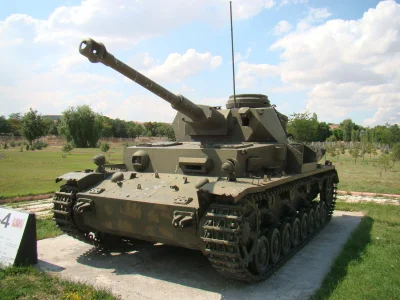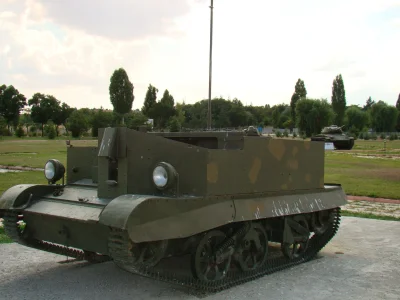- Joined
- Oct 25, 2020
- Messages
- 3,646
- Points
- 238
Few photo's of Turkey's pre-second world war preparations.
I'm thinking to share photo's of Turkish army during the second world war but I want to explain the situation before posting. For maybe little understandability about the situation before 40s in Turkey♥.
1937 Turkish army Thrace (Bulgarian -Greek border area) Maneuvers

↓↓↓ Second from left Atatürk (1st President of Turkey & first Marshal (Turkish Army) ), far right İsmet İnönü (1st Prime Minister of Turkey & Chief of Staff of the Army a Turkish war of indepence) They wear Medal of Independence (Turkey) ↓↓↓

Far right Fevzi Çakmak from 1920s to the end of second world war the commander of the armed forces second and last marshal of Turkey ↓↓

Fevzi Çakmak was the second most important man in the Turkish War of Independence. He himself planned the military action plans. When Ataturk become president when war was over, çakmak become second marshall of Turkey.↓↓↓

Why this exercises/maneuvers was done in 1937?
First of all, the fascist movement led by Benito Mussolini in Italy and then the aggressive armament of the Nazis led by Adolf Hitler in Germany after taking power and their pursuit of land division in the European continent was considered as the harbinger of an approaching war. Referring to this issue in some of their conversations, Turkish state officials, especially Atatürk, decide to organize military exercises both to prepare the armed forces for a military confrontation and to intimidate possible threats.
Apart from these, Mussolini was making declarations to found New Rome and started to pile up soldiers on the Dodecanese Islands ( see below ) Which is less than 1 mile near Turkish border.
For those who don't know, Dodecanese Islands seized in 1912 in Italo-Turkish War by Italy, island between Greece and Turkey. The most famous island are the Rhodos & Kos islands. A total of 12 majors islands and dozens of islets started to be garrisoned with Italian brigades.

For this reason, investments in the army have increased excessively. Tanks from the Soviets
was brought, planes from the British were purchased, Dozens of pilots were sent to England & France for pilot training, thousands of vickers machine guns purchased for ships, mines to naval equipment from England and France, anti-aircraft devices, new railways started to be built. Even equipment bought from the Germans, for example a few U boats.
The most famous among the preparations was ''Çakmak Hattı'' . Çakmak Line construction started urgently. Its kinda Turkish maginot line. It took its name from Fevzi Çakmak the Turkish military leader of the period.

Çakmak Line consisted of two main in total of 4 lines. Excluding the fortifications in Galipoli ( during the first world war ) campaign left over. The straits were demilitarized until the mid 1930s. Bosporus (Istanbul) and the Dardanelles ( Galipoli ) Straits began to be reclaimed again in the mid-1930s. Montreux Convention Regarding the Regime of the Straits is a 1936 agreement that gives Turkey control over the Turkish Straits again after WWI(the Bosporus and Dardanelles straits) and regulates the transit of naval warships.
Signed on 20 July 1936 at the Montreux Palace in Switzerland.

That's why defenses from the 1920's survived until mid 1930s. but the province called ''thrace'' between border of Greece & Bulgaria to Istanbul was undefended, unfortified and mostly flat. That's why defensive lines are being build here. What i mean about lines bunkers, mg nest, artillery batteries & trenches.
The main vein of the line consisted of bunkers reaching from the north of Istanbul from the black sea coast to the Greek border.

Other minor lines of defense are at South Bulgaria & where the location of rivers and lakes are combined in the west of Istanbul



and the last line apart from these there were fortifications built/left during the Balkan wars also outsite of çatalca middle of Thrace. Fortifications have been repaired here. In this way, the çakmak line consists of 4 parts.
Turkey has started the construction of this line of defense as a precaution.Even today it is possible to see hundreds of bunkers outside of Istanbul.





Also Turkey start seeking new allies in the region.
First of all The Balkan Pact, or Balkan Entente, was a treaty signed by Greece, Turkey, Romania and Yugoslavia mid 1930s in Athens, aimed at maintaining the geopolitical status quo in the region following World War I. To present a united front against Bulgarian designs on their territories, the signatories agreed to suspend all disputed territorial claims against each other and their immediate neighbors which followed in the aftermath of the war and a rise in various regional ethnic minority tensions. Other nations in the region that had been involved in related diplomacy refused to sign the document, including Italy, Albania, Bulgaria, Hungary and the Soviet Union. The pact became effective on the day that it was signed. It was registered in the League of Nations Treaty Series on 1 October 1934. The Balkan Pact helped to ensure peace between the signatory nations.


Ankara, 27 February 1938: Balkan Pact summit in Ankara. From left: Kemal Atatürk of Turkey, Milan Stojadinović of Yugoslavia, Ioannis Metaxas of Greece, and Nicolae Petrescu-Comnen of Romania.

Except this pact, Turkey establish a new alliance with eastern neighbors. Called Saadabad Pact was a non-aggression pact signed by Turkey, Iran, Iraq and Afghanistan on July 8, 1937 and lasted for five years. In this way countries would concentrate their armies in areas where possible attack can came & countries in Saadabad pact provide military aid when needed.

Turkey made agreements with the neighbors & began to make preparations for potential Italian war. 90% of the army withdrew to west. Fortifications started to be built.
@DENO @avus_uka @Kadir93 @dz.serdar @Kadir93 @Faheka @Stimpy75
I will share the pre ww2 equipment of the Turkish army and military photo's on the eve of the war.♥
I'm thinking to share photo's of Turkish army during the second world war but I want to explain the situation before posting. For maybe little understandability about the situation before 40s in Turkey♥.
1937 Turkish army Thrace (Bulgarian -Greek border area) Maneuvers
↓↓↓ Second from left Atatürk (1st President of Turkey & first Marshal (Turkish Army) ), far right İsmet İnönü (1st Prime Minister of Turkey & Chief of Staff of the Army a Turkish war of indepence) They wear Medal of Independence (Turkey) ↓↓↓
Far right Fevzi Çakmak from 1920s to the end of second world war the commander of the armed forces second and last marshal of Turkey ↓↓
Fevzi Çakmak was the second most important man in the Turkish War of Independence. He himself planned the military action plans. When Ataturk become president when war was over, çakmak become second marshall of Turkey.↓↓↓
Why this exercises/maneuvers was done in 1937?
First of all, the fascist movement led by Benito Mussolini in Italy and then the aggressive armament of the Nazis led by Adolf Hitler in Germany after taking power and their pursuit of land division in the European continent was considered as the harbinger of an approaching war. Referring to this issue in some of their conversations, Turkish state officials, especially Atatürk, decide to organize military exercises both to prepare the armed forces for a military confrontation and to intimidate possible threats.
Apart from these, Mussolini was making declarations to found New Rome and started to pile up soldiers on the Dodecanese Islands ( see below ) Which is less than 1 mile near Turkish border.
For those who don't know, Dodecanese Islands seized in 1912 in Italo-Turkish War by Italy, island between Greece and Turkey. The most famous island are the Rhodos & Kos islands. A total of 12 majors islands and dozens of islets started to be garrisoned with Italian brigades.
For this reason, investments in the army have increased excessively. Tanks from the Soviets
was brought, planes from the British were purchased, Dozens of pilots were sent to England & France for pilot training, thousands of vickers machine guns purchased for ships, mines to naval equipment from England and France, anti-aircraft devices, new railways started to be built. Even equipment bought from the Germans, for example a few U boats.
The most famous among the preparations was ''Çakmak Hattı'' . Çakmak Line construction started urgently. Its kinda Turkish maginot line. It took its name from Fevzi Çakmak the Turkish military leader of the period.
Çakmak Line consisted of two main in total of 4 lines. Excluding the fortifications in Galipoli ( during the first world war ) campaign left over. The straits were demilitarized until the mid 1930s. Bosporus (Istanbul) and the Dardanelles ( Galipoli ) Straits began to be reclaimed again in the mid-1930s. Montreux Convention Regarding the Regime of the Straits is a 1936 agreement that gives Turkey control over the Turkish Straits again after WWI(the Bosporus and Dardanelles straits) and regulates the transit of naval warships.
Signed on 20 July 1936 at the Montreux Palace in Switzerland.
That's why defenses from the 1920's survived until mid 1930s. but the province called ''thrace'' between border of Greece & Bulgaria to Istanbul was undefended, unfortified and mostly flat. That's why defensive lines are being build here. What i mean about lines bunkers, mg nest, artillery batteries & trenches.
The main vein of the line consisted of bunkers reaching from the north of Istanbul from the black sea coast to the Greek border.
Other minor lines of defense are at South Bulgaria & where the location of rivers and lakes are combined in the west of Istanbul
and the last line apart from these there were fortifications built/left during the Balkan wars also outsite of çatalca middle of Thrace. Fortifications have been repaired here. In this way, the çakmak line consists of 4 parts.
Turkey has started the construction of this line of defense as a precaution.Even today it is possible to see hundreds of bunkers outside of Istanbul.
Also Turkey start seeking new allies in the region.
First of all The Balkan Pact, or Balkan Entente, was a treaty signed by Greece, Turkey, Romania and Yugoslavia mid 1930s in Athens, aimed at maintaining the geopolitical status quo in the region following World War I. To present a united front against Bulgarian designs on their territories, the signatories agreed to suspend all disputed territorial claims against each other and their immediate neighbors which followed in the aftermath of the war and a rise in various regional ethnic minority tensions. Other nations in the region that had been involved in related diplomacy refused to sign the document, including Italy, Albania, Bulgaria, Hungary and the Soviet Union. The pact became effective on the day that it was signed. It was registered in the League of Nations Treaty Series on 1 October 1934. The Balkan Pact helped to ensure peace between the signatory nations.
Ankara, 27 February 1938: Balkan Pact summit in Ankara. From left: Kemal Atatürk of Turkey, Milan Stojadinović of Yugoslavia, Ioannis Metaxas of Greece, and Nicolae Petrescu-Comnen of Romania.
Except this pact, Turkey establish a new alliance with eastern neighbors. Called Saadabad Pact was a non-aggression pact signed by Turkey, Iran, Iraq and Afghanistan on July 8, 1937 and lasted for five years. In this way countries would concentrate their armies in areas where possible attack can came & countries in Saadabad pact provide military aid when needed.
Turkey made agreements with the neighbors & began to make preparations for potential Italian war. 90% of the army withdrew to west. Fortifications started to be built.
@DENO @avus_uka @Kadir93 @dz.serdar @Kadir93 @Faheka @Stimpy75
I will share the pre ww2 equipment of the Turkish army and military photo's on the eve of the war.♥
Last edited:




